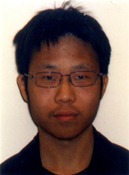Simulating Spatial-Temporal Dose Rate Deposition On Tissue Sparing for Scanned Pencil-Beam Vs Double-Scattered Protons
R Yang1*, (1) BC Cancer - Centre for Southern Interior, Kelowna, BC, CA; E Diffenderfer2, (2) University of Pennsylvania, Philadelphia, PA, USA
Presentations
TU-F-TRACK 5-1 (Tuesday, 7/27/2021) 4:30 PM - 5:30 PM [Eastern Time (GMT-4)]
Purpose: To develop a proton dose calculation framework simulating both spatial distribution and time structure of ultra-high dose rate deliveries, enabling comparison of scanned pencil-beam (PBS) vs double-scattered (DS) sequences on local tissue sparing.
Methods: Physical proton dose was implemented based on the validated superposition model in Eclipse, with a novel grid interpolation framework enabling rapid computation of each time-step.Oxygen depletion and tissue sparing was modeled across the calculation grid as exponential depletion and recovery proportional to concentration gradient, each time-step coupled to the Oxygen-Enhancement-Ratio k-curve, yielding effective dose. Dose equivalent PBS and DS plans were created with various time structures to explore their effective dose which depends on oxygen concentration at each moment of energy deposition. Beam currents were extrapolated to FLASH dose rates.
Results: DS deliveries consistently yielded greater tissue sparing proximal to the spread out Bragg peak (SOBP). Slew time between spots and layers inherent to PBS deliveries allowed oxygen to recover to nearly physiologic levels, whereas DS modulation irradiates the entire field near simultaneously, for widespread oxygen depletion even at a fraction of the PBS instantaneous dose rate. DS offered nearly twice the differential sparing of regions proximal to the SOBP, where dose to organs-at-risk are of concern. PBS can be improved by minimizing slew time and number or dose repaintings.
Conclusion: The spatial-temporal structure of high dose rate deliveries yields insight into differential tissue sparing, as groundwork for proton treatment planning while considering FLASH effects. PBS scanning trajectories can be explored which maximize differential sparing in regions of interest. Radiochemistry and tissue sparing models can be refined with further experimental evidence towards a planning paradigm considering dose rate modulated tissue sparing.
Handouts
Keywords
Not Applicable / None Entered.
Taxonomy
TH- External Beam- Particle/high LET therapy: Proton therapy – dose optimization
Contact Email




